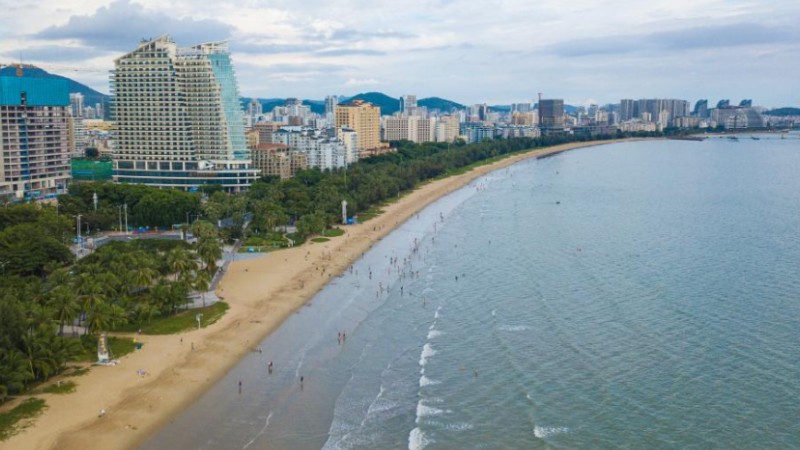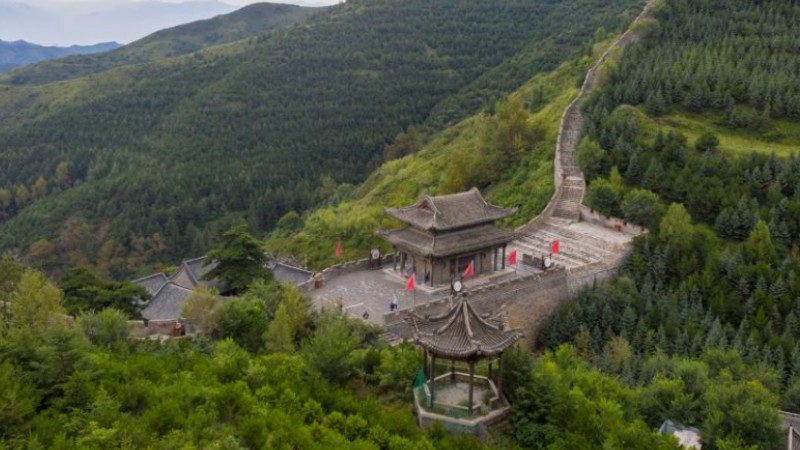HKSAR gov't-wide typhoon response to enable speedy return to normalcy
HONG KONG, Sept. 3 (Xinhua) -- The government of China's Hong Kong Special Administrative Region (HKSAR) for the first time activated "government-wide mobilization" to facilitate operations against super typhoon Saola, enabling over 7 million residents to swiftly resume their daily lives and garnering widespread praise.
Approved by HKSAR Chief Executive John Lee, the top-level emergency response means the ready deployment of considerable manpower for the community's full return to normal operations.
Saola, with sustained winds of nearly 210 km per hour near the center, equivalent to a Category 4 hurricane on the Saffir-Simpson wind scale, posed a significant challenge to the global financial hub as the strongest storm since at least Mangkhut in 2018.
The Hong Kong Observatory issued the No. 10 hurricane signal, the top-level warning, under the effect of typhoon Saola on Friday. Due to the storm, many public services and activities in Hong Kong were suspended. Trading at the Hong Kong Stock Exchange was suspended, and multiple flights were canceled at Hong Kong International Airport.
As Saola is moving away from Hong Kong, the government promptly mobilized a quick response unit comprising over a hundred of civil servants from different departments to provide support in several districts.
Alice Mak, secretary for home and youth affairs of the HKSAR government, led some members to Sha Tau Kok to assist the elderly members who had stayed in a temporary sheltering facility to return to their elderly homes.
Members of the quick response unit also went to Tung Chung Heung to carry out clean-up work, removing garbages, fallen branches and leaves on roads. In addition, the members went to Kwun Tong to help residents remove sandbags. They also cleaned the pavement of Hoi Pong Road, Lei Yue Mun and the Lei Yue Mun Sports Center which was used as a temporary shelter.
Amid heavy rain and wind, a large tree fell at the Taikoo bus station in Hong Kong's Eastern District, obstructing the road. The fire department promptly arrived and swiftly cleared the fallen tree. Netizens expressed gratitude to the firefighters for their dedicated response in challenging weather. They took to social media to praise the Hong Kong Police and Hong Kong Fire Services Department, acknowledging their excellent service in safeguarding the public during the severe typhoon.
Despite the typhoon, personnel from multiple government departments and organizations diligently maintained their positions, ensuring the provision of essential emergency rescue services, swift response to incidents, effective dissemination of typhoon updates, and uninterrupted delivery of other vital public services in Hong Kong, John Lee said in a social media post.
Lee introduced the "government-wide mobilization" in his policy address last October to ensure a swift response by designating personnel from various departments to form a quick response unit during major crises. At the beginning of 2023, the Civil Service Bureau conducted a drill of the mobilization.
Prior to the main impact of typhoon Saola, the HKSAR government held a cross-departmental supervisory committee meeting on Thursday, engaging over 20 departments to establish wind prevention guidelines. In accordance with the observatory's latest scientific predictions, the decision was made to raise the No. 8 typhoon signal, the third-highest warning under Hong Kong's weather system, in the early hours of Friday.
The earlier issuance of warnings empowered citizens to prepare ahead by obtaining essential supplies, coordinating transportation schedules, and enabling employers to plan work arrangements for their employees, ensuring a well-organized response.
During typhoon Saola, the observatory collaborated with the Government Flying Service, deploying fixed-wing aircraft to gather firsthand meteorological data of the typhoon. This initiative aimed to enhance the accuracy of predictions concerning the storm's intensity and trajectory.
In comparison to the destructive typhoon Mangkhut in 2018, which caused injuries to at least 458 people and resulted in reports of over 60,000 fallen trees, the passage of typhoon Saola recorded 86 injuries and 1,545 reports of fallen trees as of 4 p.m. Saturday.
The fallen trees in different districts were swiftly cleared as sectors across society joined forces, leading to a rapid recovery of smooth road traffic and a return to normalcy.
On Sunday, some government employees will continue completing typhoon-response tasks in Tai O, a fishing town located on the western side of Lantau Island where the water level has not completely receded yet, according to Alice Mak. "This mobilization has shown us the unity of the civil service team, motivating us to work together and assist the public in dealing with the aftermath of the typhoon."
Photos
Related Stories
- China maintains flooding, typhoon emergency response levels in southern regions
- China ups typhoon emergency response for southern province
- Macao issues No. 8 signal for Typhoon Saola
- China renews red alert for typhoons Saola, Haikui
- Most severe emergency response activated in China's Shenzhen for super typhoon Saola
Copyright © 2023 People's Daily Online. All Rights Reserved.









